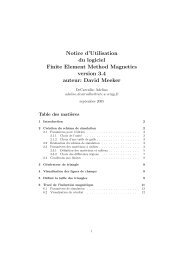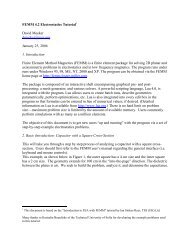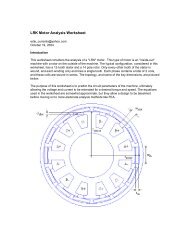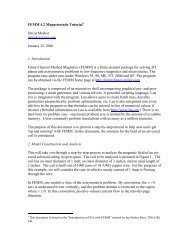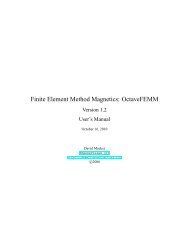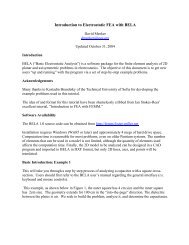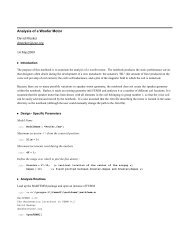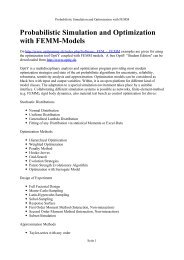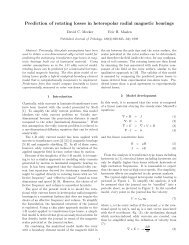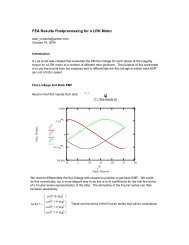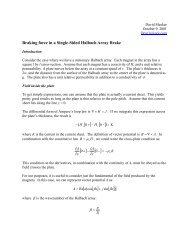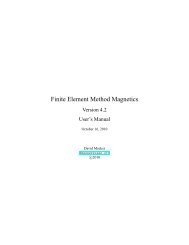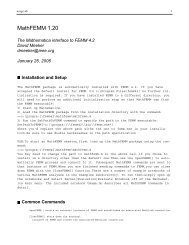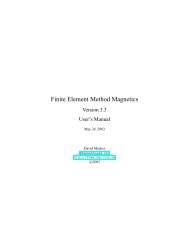1 Introduction - Finite Element Method Magnetics
1 Introduction - Finite Element Method Magnetics
1 Introduction - Finite Element Method Magnetics
You also want an ePaper? Increase the reach of your titles
YUMPU automatically turns print PDFs into web optimized ePapers that Google loves.
Figure 9: Boundary Property dialog.<br />
The first selection in the dialog is the Name of the property. The default name is “New Boundary,”<br />
but you should change this name to something more descriptive of the boundary that is being<br />
defined.<br />
The next selection is the BC Type drop list. This specifies the boundary condition type. Currently,<br />
FEMM supports the following types of boundaries:<br />
• Prescribed A With this type of boundary condition, the vector potential, A, is prescribed<br />
along a given boundary. This boundary condition can be used to prescribe the flux passing<br />
normal to a boundary, since the normal flux is equal to the tangential derivative of A along<br />
the boundary. The form for A along the boundary is specified via the parameters A0, A1,<br />
A2 and φ in the Prescribed A parameters box. If the problem is planar, the parameters<br />
correspond to the formula:<br />
A = (A0 + A1x+A2y)e jφ<br />
(17)<br />
If the problem type is axisymmetric, the parameters correspond to:<br />
A = (A0 + A1r+ A2z)e jφ<br />
• Small Skin Depth This boundary condition denotes an interface with a material subject<br />
to eddy currents at high enough frequencies such that the skin depth in the material is very<br />
small. A good discussion of the derivation of this type of boundary condition is contained in<br />
[2]. The result is a Robin boundary condition with complex coefficients of the form:<br />
∂A<br />
∂n +<br />
<br />
1+ j<br />
A = 0 (19)<br />
δ<br />
18<br />
(18)



